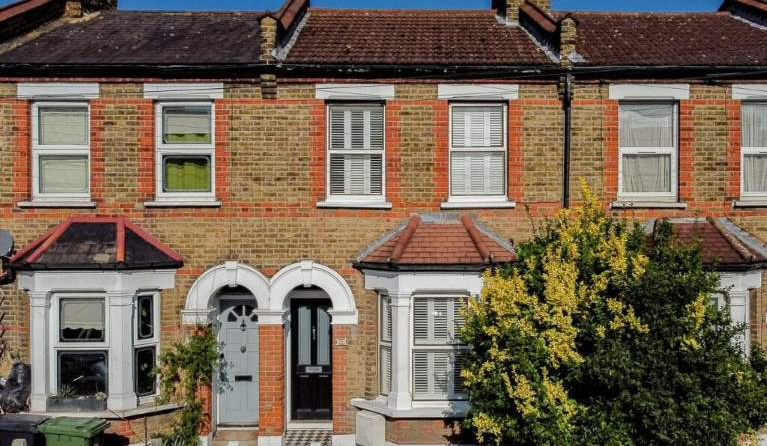Should I get a 2 or 5-year fixed rate mortgage?
If you’re thinking of taking out a mortgage, or you’re coming to the end of your existing fixed-rate product, you’ll know there’s been a lot in the news about mortgage rates recently.
Over the course of a mortgage term, it’s likely you’ll be able to select different mortgage types, and different deals, in order to make sure you’re paying your mortgage off in the way that works for you.
At the moment, most people taking out mortgages do so on fixed rates: 96% of people buying homes, or remortgaging in the last three months of 2022, opted for a fixed-rate mortgage.
Lenders set their own mortgage rates, and how high or low they are is significantly influenced by the Bank of England’s Base Rate, as well as the financial market’s perception of where Base Rate will be in the coming years. If you’re looking for the lowest priced fixed rate mortgage, this will largely be dependent on what’s going on in the wider economy, and what’s likely to happen in the future. Traditionally, this would have been a 2-year fixed deal, but this changed in 2022, and since then, 5 year products have been cheaper. A mortgage broker or adviser will be able to help advise you, but it can be worth doing some of your own research, too.
The most common fixed rate mortgages are for 2 and 5 years, but you’ll also find lenders offering other time periods, including 3 years, or as long as 10-year fixed terms. But how do you work out what might be the right option for you?
What’s the difference between 2 and 5-year fixed rate mortgages?
In simple terms, a 2-year fixed rate mortgage will lock you into a fixed interest rate for 2 years, while a 5-year deal, unsurprisingly, locks you into that rate for 5 years. This rate is guaranteed, regardless of what’s happening elsewhere in the economy, including any changes made to the Bank of England’s Base Rate.
You can check what the current average rates are for 2 and 5-year fixed deals here.
Why are the interest rates on 2 and 5-year deals different?
When a lender offers you an interest rate on your mortgage, they’ll take into account what the mortgage is likely to cost them over the course of your mortgage deal. To calculate this, they use swap rates (the underlying cost of mortgages to lenders) which are the market’s view of the direction of Base Rate.
In recent years, interest rates have been ultra-low. And 5-year mortgages have usually had higher interest rates than their 2-year counterparts.
But as interest rates started to rise throughout 2022 and 2023, we saw 2-year fixed deals become more expensive. And since the end of 2022, 2-year deals have had higher interest rates, which ultimately means you’ll pay more per month for a 2-year deal. This is because the markets have been – and still are – of the view that interest rates will drop from their current level in the coming years. And lenders have baked this into their longer-term pricing of mortgage deals.
How long have 5-year fixed rates been cheaper than 2?
It hasn’t always been the case that 5-year mortgages have been cheaper than 2-year mortgages. In fact, it’s only been this way since the latter part of 2022.
Advantages of a 2-year fixed mortgage
Your monthly payments will be fixed for two years, so you’ll have certainty in what your monthly payments are going to be throughout this period.
The expectations of the financial markets is that interest rates are either at their peak, or are set to reach their peak soon. After which, Base Rate is predicted to stay flat for a sustained period, before falling back, with mortgage rates also following this pattern.
So you might find that by the time you need to remortgage, the new mortgage deal you’re offered could be considerably less than what borrowers are being offered today, although rates are very unlikely to fall back to ultra-low rates of recent years. You can check the current average mortgage rates here, which is updated weekly.
Disadvantages of a 2-year fixed rate mortgage
Right now, 2-year deals are more expensive than 5-year deals. In September 2023, the gap between 2 and 5-year deals was around 0.5%. So, while you might be able to access a cheaper mortgage rate after your 2-year deal is up, right now you’ll pay more per month by opting for this length of fixed rate.
Advantages of a 5-year fixed rate mortgage
Though mortgage rates are significantly higher in 2023 than they’ve been over the last 15 years, if you’ve been offered a 5-year fixed– rate mortgage deal and you’re comfortable with the repayments, you can be comfortable in the knowledge that your monthly repayments are locked in at the same amount for the next 5 years. So even if interest rates rise during that time, it won’t affect your monthly repayments.
Right now, 5-year deals are cheaper than 2-year fixed-rate mortgages, so you’ll currently see lower monthly repayments by opting for a 5-year deal.
To give you an idea of how much you could save, you can expect that for every 1% reduction in the mortgage rate you’re offered, this equates to a £54 monthly saving for every £100,000 you have left to pay on your mortgage.
Disadvantages of a 5-year fixed rate mortgage
You’re locked into this mortgage rate for a longer period, so if interest rates do happen to drop, you wouldn’t be able to take advantage of lower rates on offer, until you were either in a position to remortgage, or willing to cover the – often hefty – fees that come with leaving your mortgage deal early.
Is it better to get a 2 or 5-year fixed rate mortgage right now?
Traditionally, those taking out a mortgage will opt for the fixed deal with the lowest interest rate associated with it, as this ultimately leads to lower monthly repayments. But remember, it’s important to speak to a mortgage broker if you’re thinking about taking out a mortgage right now, as they’ll be best placed to guide you through the process.
Right now, 5-year fixed rates have lower rates than their 2-year counterparts. In fact, throughout 2023, the gap between 5 and 2-year mortgage rates has grown. At the moment, a 5-year fixed rate is roughly 0.5% lower than a 2-year fixed rate on average. And in real terms, this means you could expect to pay around £27 less per month for every £100,000 you have left on your mortgage by taking out a 5-year fixed rate.
Our mortgage expert, Matt Smith, says: “There’s no obvious answer to the question of whether to take out a 2 or 5-year deal right now. This is leading around 85% of the people taking out mortgages now to seek the advice of a mortgage broker to guide them through the decision-making process. The challenge for people is weighing up whether to take out a 2-year deal and pay more in the short term, with the hope of benefitting from potentially considerably lower rates in 2025 and beyond, or to lock in for 5 years and have some certainty around monthly payments in the longer term”.
And remember, in line with the options laid out in the Mortgage Charter, you can look into switching to another fixed-rate mortgage deal 6 months before your existing deal ends.
Are tracker mortgages a good option right now?
Tracker mortgages do just that: they ‘track’ the Base Rate and follow its trajectory. So any future reductions to Base Rate will mean people on tracker mortgages can take advantage of cheaper rates in real time.
Market expectations are that Base Rate is either at or nearing its peak, and will remain flat throughout 2024, before starting to drop. History has shown us that when Base Rate begins to drop, tracker mortgages become more appealing to people, because they can instantly start to see the benefits of interest rate reductions, in the form of lower monthly payments. And as a general rule, for every 1% change to the Base Rate, your monthly mortgage payments will be adjusted by £54 a month on average, for every £100,000 left on your outstanding balance.
Please note: Rightmove is not authorised to give financial advice; the information and opinions provided in these articles are not intended to be financial advice and should not be relied upon when making financial decisions. Please seek advice from a specialist mortgage provider.
The header image for this article was provided courtesy of Stanford Estates, Forest Hill.



